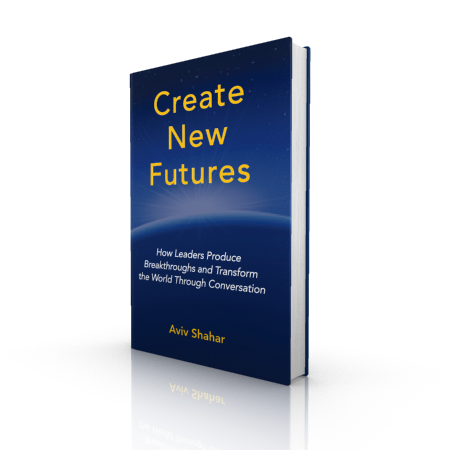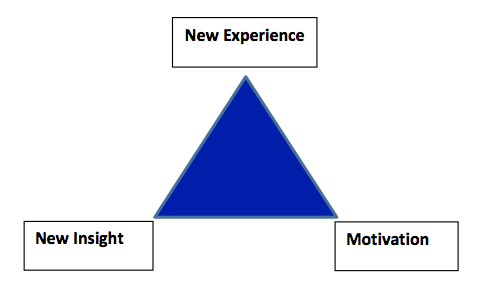
In a leader’s storehouse for creating meaningful change, conversation may be the tool most underestimated and underutilized. Its power to pivot participants seamlessly onto a new course makes it a fundamental part of growth and change. Bad conversations result in bad outcomes; good conversations lead to good outcomes. The problem is not that leaders are not currently trying to facilitate good conversation, it is simply that they lack a strategic conversational framework.
A Lost Art
Conversation in its rawest sense - purposeful listening and focused questioning - is often confused with its less effective cousins: undirected speech and pre-assumed dialogue. Often, we find it is easier to talk through bullet points, settling for answers we expect to hear rather than digging to find truly meaningful information. The art of framing and focusing the flow of our thoughts and ideas for optimal enhancement of understanding is something that has been somewhat lost, most especially in the corporate world. But it does not have to be lost for good.
I spoke with Aviv Shahar, a conversation expert and a leading executive consultant, about how to use conversation in a way that brings out its maximum potential and creates new futures.

Aviv Shahar
Q: What damage is caused by executives who fail to use good conversation frameworks?
Shahar: The conversations leaders create determine whether or not they achieve their missions. Ineffective conversations waste precious resources, shatter trust and collaboration, and dramatically diminish possibilities. Good conversation frameworks enable executives to lead their teams to realize the desired purpose and outcomes. Leaders are known by the conversations they create.
Q: Can conversation frameworks be learned or must you be born with that talent? What can leaders who struggle in this area do to become proficient?
Shahar: Conversation is a learnable skill that improves with practice. Although some people find it comes more naturally than others, everyone can learn and practice it. These are four steps leaders can take to become proficient in the skill of conversation:
1. Become deeply interested in conversations and develop a curiosity and fascination with learning.
2. Develop excellent active listening skills.
3. Become adept at seeing both the forest and the trees by building your capacity to map conversations.
4. Develop a series of frameworks you can apply in the moment to shape and guide the conversation purposefully, with versatility and ease. Leaders create new futures by shaping their conversations with their teams and their stakeholders.
Leaders who struggle to shape conversations must develop their awareness, find role models they can emulate, and engage the help of a coach.
Q: What does it mean to “create” new futures? Is the future something we create or something we step into and try to navigate?
Shahar: Those who decline to create their own futures leave themselves at the mercy of events and of others who will shape it for them. While we must navigate factors that are out of our control, we have the power to choose how we respond, what initiatives we take, which alternatives we evoke and enable, and how we choose to apply ourselves to the opportunities that present themselves. Every day we step onto the stage where we co-create the theater of our life. With the materials available, we write our script and then act and direct the main character—the hero—in the movie of our life. Steve Jobs and Elon Musk are two examples of those who have created new futures – not just for themselves, but for others as well.

Create New Futures is Aviv’s new book to get you asking yourself new questions shift your future further into your control.
Q: What story can you share about how you helped a leader create a new future by learning to leverage conversations?
Shahar: In his new executive role, Ron was responsible for more than 12,000 employees in a fast moving global organization. His request was simple: “I know what I want to build and where we must be to create new higher-value solutions and achieve operational excellence. The question I am wrestling with is, what is the best way to mobilize change quickly and enable sustainable progress?”
Peak experiences are an essential element in creating and leading change. They become lodged deeply in us because they are different from our routine.
How do peak experiences impact us? They imprint us with new mental models and galvanize fresh ways of working that we then seek to emulate and recreate. For instance, converting ideas into implementable solutions faster requires a new way of working. This is a behavior and muscle memory we bring to life through a new experience the team co-creates.
“To help your team embrace new ways of working effectively and successfully, you must bring together three elements critical to initiating change and sustaining its progress. Sketching on the pad in front of me, I drew the Triangle of Change:

“To create change, the team first must gain new insight about the future you seek to enable. This new insight helps raise the awareness necessary to envision and initiate new future possibilities.
“To jump-start the process of building your vision of a high impact entrepreneurial organization, you must cultivate new insights and awareness through conversation with your team, ensuring that they understand why the vision is so important, and how it will impact organizational results. No new insight and perception equals no urgent need for change.
“Compelling motivation is the second critical element to create and mobilize change. With new awareness planted within your team, you allow them to discover their individual and collective motivation. Motivation is an intrinsic property that people discover by answering the WHY question. The “why” establishes what is in it for each individual—the WIIFM (What’s in it for me), and what’s in it for the whole team—the WIIFU (What’s in it for us). You must unleash the “me” and the “us” motivations.
“How do we create a new and memorable experience that activates the change you imagine? By bringing the future into the present, allowing people to taste it and experience it. To fully embrace change, we must experience a new way of working. New experience is the portal to change.”
“That’s exactly my experience, too,” Ron responded. “That’s precisely what we need to do. What kind of experience do you have in mind?”
“You begin by creating a new experience and shared conversation with your team. For example, to dramatically accelerate the prototyping of solutions, you must build an agile innovation culture by practicing the conversation of faster learning loops. We can simulate these behaviors with your team. By participating in a workshop process that facilitates these critical conversations and behaviors, they can learn to operate at a higher level and apply the knowledge of this modus operandi.”
Three weeks later, Ron and I met with his leadership team to embark on the journey of co-creating a new future. Together we envisioned the opportunities ahead. During the first day, the team agreed to resist the urge to bring up obstacles that would limit their capacity to imagine their future.
The dynamic change Ron had envisioned got underway. His team created a new peak experience. They developed a sense of shared ownership and were motivated by their inspiring vision. The natural next step was to mobilize the organization to achieve their chosen priorities.
